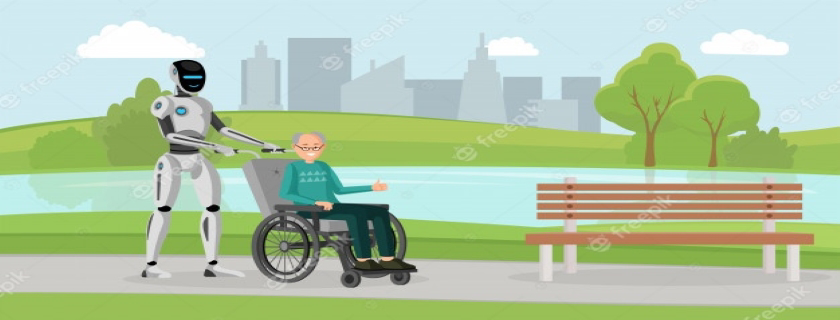Smart home: A boon for senior citizens
July 26, 2021

Post-industrial society has transformed the family structure in size and all the dimensions from joint family to nuclear family. Almost zero population growth in the developed countries and lower population growth in developing countries, along with improved health care and increased average lifespan, have created a larger proportion of senior citizens.
Although the average lifespan has increased, many elders live with various chronic diseases and debilitating health conditions. The smart home is a promising concept to enhance convenience, security, safety, and entertainment for home dwellers. But the elders, either living alone or with families, chronic health issues need unique design in the smart home.
Simple interface
Smart home technology should not be a barrier for the disabled to get the desired services. And that’s why a smart home must have a simple interface. Recent advances in the voice-controlled interface (Alexa or Siri) can be a boon for elders. Many elders are not technology savvy and are well versed in using (via apps) smartphones or tablets to command and control smart home systems and smart appliances.
Full proof security
Thanks to the smart security system (security cameras, smart locks, and motion sensors), elders can have full-proof security, live independently -home, and detect burglars’ unauthorized movement in their backyard.
Domestic tasks
Elders living alone can remotely control white goods such as Smart refrigerators, washing machines, dishwashers, ovens, and connected coffee pots. In case of tedious job or home assistance, the domestic robot can assist disabled elders in performing daily tasks such as vacuum cleaning, washing clothes, or trimming backyard grass. And in near future, it may provide companionship and healthcare assistance.
Climate control
Abrupt changes in the weather are new normal due to climate change phenomena. Elders are susceptible to abrupt changes in temperature and humidity. But thanks to an automated blind system, smart humidifier, and thermostat, the elder can set a convenient indoor climate (controlled temperature and humidity) with a user-friendly interface (smartphone or tablet or voice-controlled apps.)
Entertainment
Elders can use smartphone or voice-assisted interfaces to run entertainment appliances such as smart TV and wireless speaker.
Home care
In the context of the Covid pandemic and social distancing, home care has emerged as the new normal.
Thanks to advanced wearable technology, the elder’s vital parameters (Blood pressure, heartbeats) can be monitored remotely and sent to the doctor for further action. In that sense, a smart home can not only fulfil users’ needs but can also be designed for home care for elders suffering from debilitating chronic conditions. It enhances their capacities and enables them to maintain daily routine and health regime to take medication regularly. It obviates the need for elders to OPD (Outdoor patient department) appoint and also reduces stress on the healthcare system.
Outdoor management
Physically handicapped cannot be a barrier for elders to maintain backyard and veranda which need regular irrigation. An automated irrigation system enables elders to manage garden sprinklers remotely.
By utilizing suitable technology (wire-line (X10 and UPB), Radio Frequency (RF), Wi-Fi, wireless communication (Z-Wave, Zigbee) Smart homes liberate disabled people to live independently in the community. It enhances capacities and improves the quality of everyday life. The smart home is not a panacea for elders, but with appropriate design, it empowers the disabled or people with debilitating health conditions to live independently. It enables elders to aid and simplify their daily tasks.